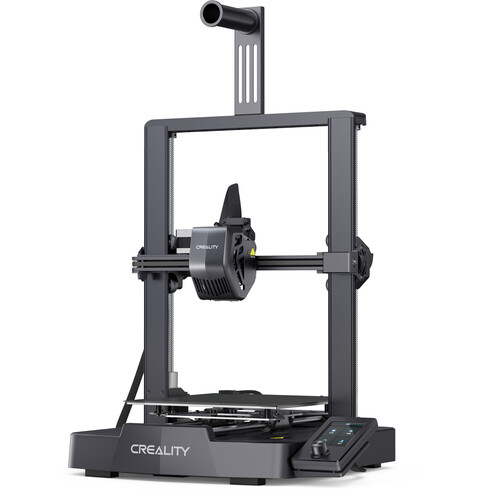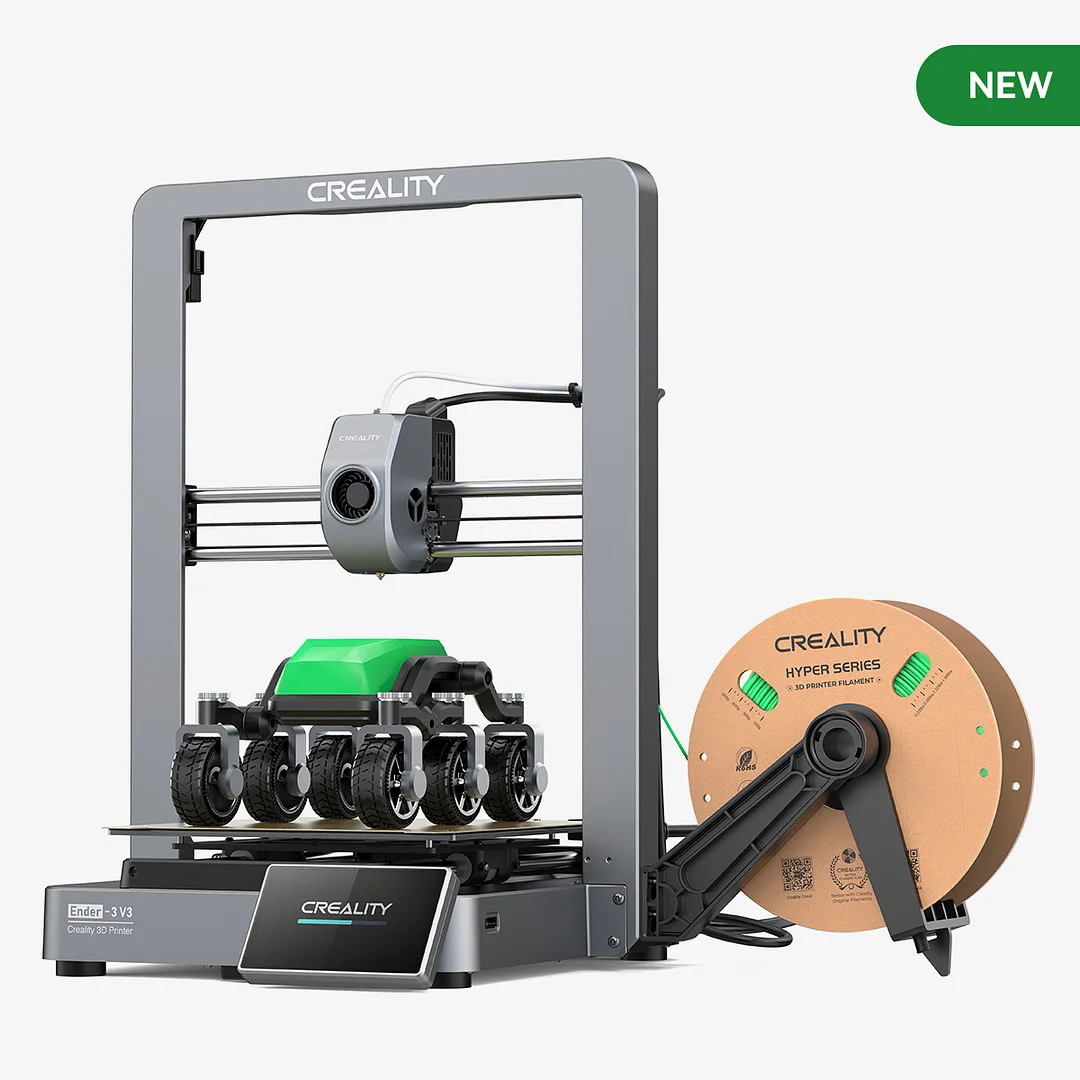Compare Ender 3 V3 SE vs Ender 3 V3
Comparison between the best 3D printers
Choose the best 3D printer at the best price. The cheapest 3D printers are here.
Buy a 3D printer here with 3D Fila.
 |
 |
|
| Model | Ender 3 V3 SE[BUY Ender 3 V3 SE] |
Ender 3 V3[BUY Ender 3 V3] |
| Printing Material | Filament | Filament |
| Buy Filament for Creality Ender 3 V3 SE | Buy Filament forCreality Ender 3 V3 | |
| Estimated price | $199,00 | $389,00 |
| Manufacturer | Creality | Creality |
| Release Year | 2023 | 2024 |
| Print Volume [mm] | 220x220x250 | 220x220x250 |
| Printer Size [mm] | 420x366x490 | 358x374x498 |
| Weight [kg] | 7,34 | 7,12 |
| Power Loss Recovery | NO | YES |
| Enclosed printer | NO | NO |
| Bed Leveling | Automatic | Automatic |
| Filament End Sensor | NO | YES |
| Bed type | Heated | Heated |
| Power supply system | Direct Drive | Direct Drive |
| Standard nozzle | 0,4 | 0,4 |
| Maximum Nozzle Temperature [°C] | 260 | 300 |
| Maximum Bed Temperature [°C] | 100 | 110 |
| Maximum printing speed [mm/s] | 250 | 600 |
| Filament holder | YES | YES |
| Camera for supervision | NO | NO |
| Recommended filaments | PLA, PETG e TPU (95A+) | PLA, PETG e TPU (95A+) |
| Recommended slicers | Creality Print, Cura 5.0 ou superior, Prusa Slicer, Orca | Creality Print, Cura 5.0 ou superior, Prusa Slicer e Simplify3D |
| Maximum Resolution [mm] | 0,1 | 0,01 |
| Processor | 32-bit Silenciosa | 32 Bits |
| Display | 3,2'' + Knob | 4.3" HD touch screen |
| Power Supply | 350 W | 350 W |
| Connectivity | SD | USB drive, LAN, Creality Cloud APP |
| Operating systems | Windows, Linux, Macbook | Windows, Linux, Macbook |
| Date of registration in the system | 2024-03-06 | 2024-03-01 |
| Release date | 2023 | 2024 |
| Extra features | The Ender 3 V3 SE stands out for its easy assembly, excellent automatic bed leveling, direct extrusion and easy interface, ideal for beginners. Although it uses a coated PC board, it offers robust performance, with print speeds of up to 250mm/s, thanks to a solid construction and linear rods on the Y axis. It lacks Wi-Fi, preferring file transfer via SD card. | The Ender 3 V3 redefines 3D printing with its CoreXZ system, reaching speeds of up to 600mm/s, and stable metal construction with cast parts. It stands out for its powerful direct extrusion, quick-change tri-metal nozzle, and two powerful fans for instant cooling. Equipped with automatic calibration, it makes leveling and adjustments easy, promoting a fast and reliable printing experience with various materials. |
| Support for multiple colors and materials (AMS and CFS) | NO | NO |
Notes * |
||
| Cost-benefit | 7 / 10 | 7 / 10 |
| Hardware | 0.8 / 10 | 3.6 / 10 |
| Tela | . | . |
| Print volume | 3 / 10 | 3 / 10 |
| Performance | 2 / 10 | 5 / 10 |
| [BUY Ender 3 V3 SE] | [BUY Ender 3 V3] |
Conclusion |
| In comparing the Ender 3 V3 SE and the Ender 3 V3, both printers from Creality, it's clear that each model has distinct advantages tailored to different user needs and budgets. The Ender 3 V3 SE comes at a significantly lower price point, appealing to beginner users and those looking for a cost-effective solution for 3D printing. With features such as automatic bed leveling and direct drive extrusion, it offers a solid performance, although it lacks advanced features like power loss recovery and a filament end sensor. Its maximum print speed of 250 mm/s is respectable for most hobbyists but does not match the higher performance capabilities of its counterpart. On the other hand, the Ender 3 V3 is positioned as a more advanced 3D printer, justifying its higher price through superior specifications. It boasts a remarkable maximum print speed of 600 mm/s, which significantly enhances productivity for experienced users. The inclusion of power loss recovery and a filament end sensor makes it better suited for longer, more complex print jobs. Its robust construction and higher maximum nozzle temperature allow for greater versatility in material usage and print quality. While both printers share the same print volume and dimensions, the Ender 3 V3 offers better performance, making it a preferable choice for those who require speed, reliability, and versatility in their 3D printing projects. However, for someone seeking an entry-level printer without breaking the bank, the Ender 3 V3 SE remains a formidable option. Ultimately, choosing between the two boils down to individual user needs—whether the priority lies in affordability and ease of use, or in advanced capabilities and higher performance metrics. |

